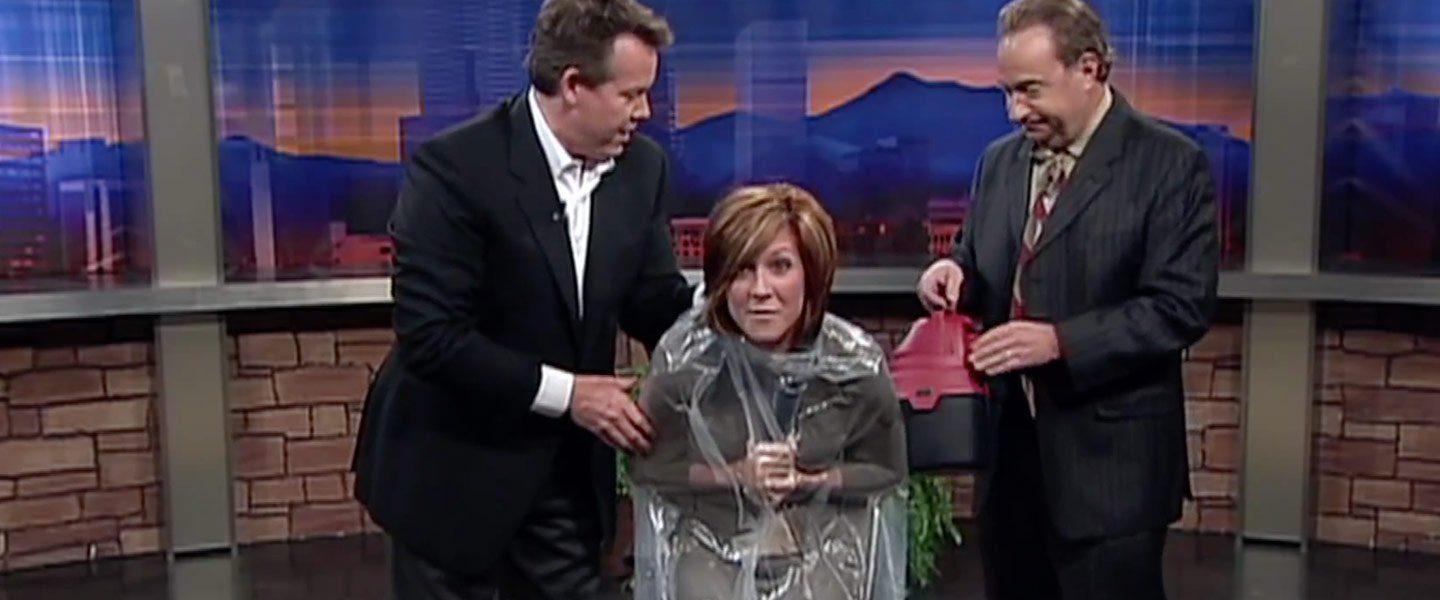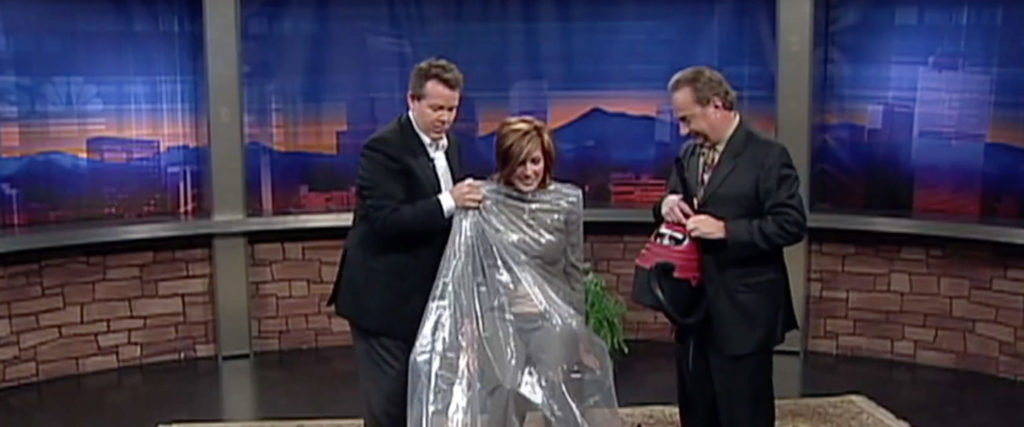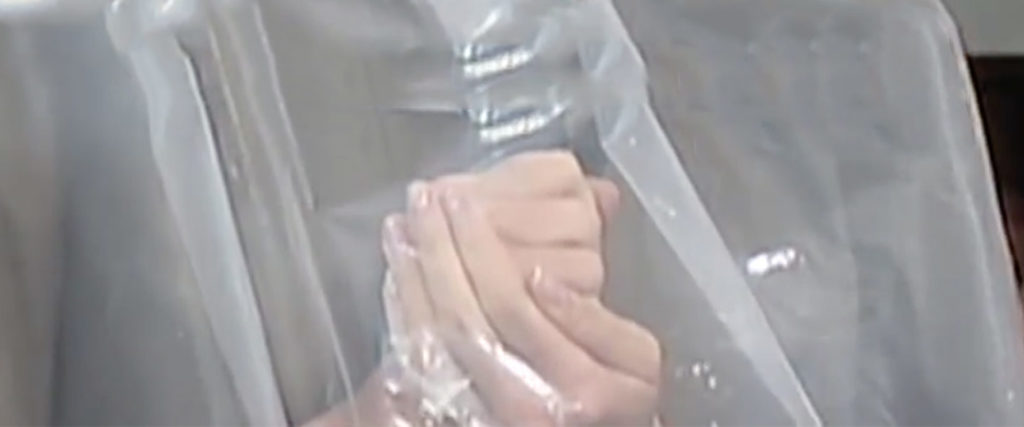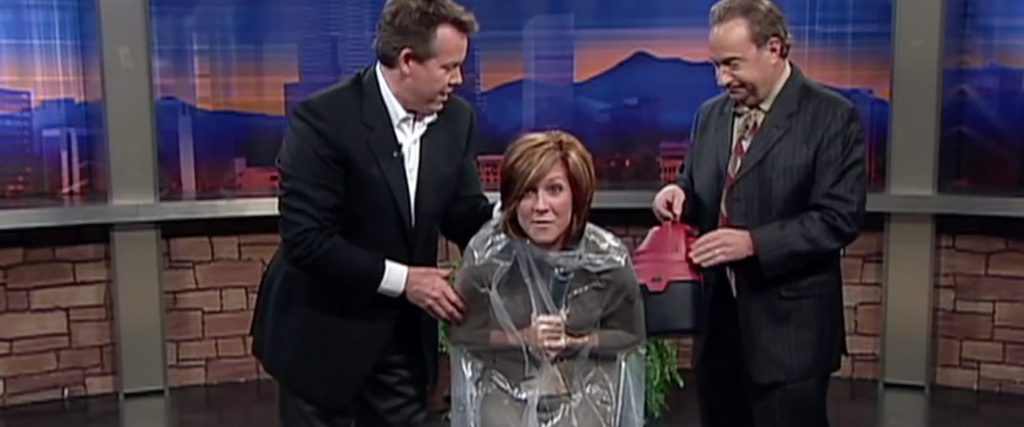Soda Can Crusher
You could use your foot, your hands, or even your head (not advised) to crush a soda can. But nothing compares to the fun you’ll […]

The simple difference between high and low pressure air makes it possible to “shrink wrap” things for better packaging and preservation. The funny thing is that people think of shrink wrapping as a process of “sucking” air out of a container. Actually, there’s no such thing because air can only push or it can pull. This demonstration confirms this fact of science in a most unforgettable way, too.

Remember, for this demonstration one of the two additional people on the shrink-wrap crew must be an adult. You need the help of another person to shrink wrap an arm or leg safely and successfully and have an adult present. See the Safety Information below.
Slip your arm as far as you can into the plastic bag.

The helper feeds the nozzle and tube of the vacuum to your hand in the bag. Cup your hand over the end of the nozzle so the plastic does not get pulled into the nozzle. You’ll use your hand to keep the bag and the nozzle separated when the vacuum is turned on.
Either you or your assistant needs to close the opening of the bag around your upper arm and vacuum tube to form an airtight seal. Wearing sleeves for this demonstration is a good idea.

Someone gets to turn on the vacuum to remove (pull) the air out of the bag. Holes, tears, or gaps in the bag and around your sleeve will keep it from shrinking snuggly around your arm. If the seal is tight, it takes just seconds for the plastic to mold itself to your hand, arm, and sleeve. The sensation is most unusual, too!
With your hand in the shrink-wrapped bag, you’ll find it’s next to impossible to move your fingers even a little. Keep reminding yourself that it’s just air doing all this.
When watching this demonstration, most people have the misconception that air is being “sucked” out of the bag. This may be a good time to remind them that Sir Isaac Newton described forces as either a “push” or a “pull.” He did not refer to anything being “sucked.”
The practical applications for this process include vacuum packaging of perishable foods to greatly increase their shelf life and safety. Removing air around products also reduces the shipping space required for packaging non-food items. cryovac® packaging in the meat, food, and cosmetic industries makes it possible for safe, worldwide access to these and other products.
cryovac® is a registered trademark of cryovac, Inc. All Rights Reserved.
Tell your assistant to please stop yelling, “Let me try! Let me try!” Turn off the vacuum and release the grip on the bag around your arm. Remove it so you can repeat the process on your assistant. This time, however, you’ll want to shrink wrap your assistant’s leg.
Have your friend take off a shoe but leave on the sock. Wrap the plastic bag up and around the leg. Tell your friend to stick the nozzle inside the sock. As your hand did before, the sock helps to keep the bag from being pulled into the nozzle. You might need to experiment with the best placement of the nozzle in the sock around the foot.
Gather the open end of the bag and form a tight seal around the pant leg and tube above the knee. Turn on the vacuum and remove the air from the bag. What a sensation!
By this time, four other people are in line to experience the effects of atmospheric pressure on their extremities. Before getting a turn, however, have them describe what happens to the bag using the terms “push” and “pull” in place of the meaningless term “suction.” Hey – you’ve started a new science business!
Remember, for this demonstration one of the two additional people on the shrink-wrap crew must be an adult. You need the help of another person to shrink wrap an arm or leg safely and successfully and have an adult present. Excessive removal of air from the bag can be a painful experience for the subject and can cause serious injury. NEVER cover a subject’s head with the bag as injury and death from suffocation can result.
Wayne Goates is credited as the creative brains behind this science demo. He devised it in 1969 and has been using it ever since to illustrate the dramatic effects of atmospheric pressure.
Reference: Goates, Wayne, NMLSTA Level Line, “Shrink Wrap With A Vacuum,” Winter, 1996